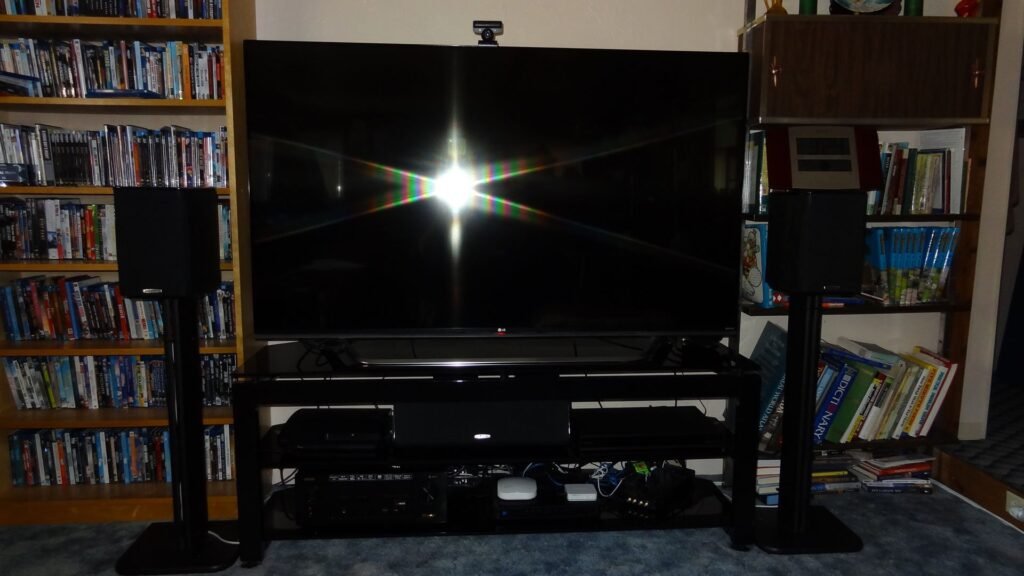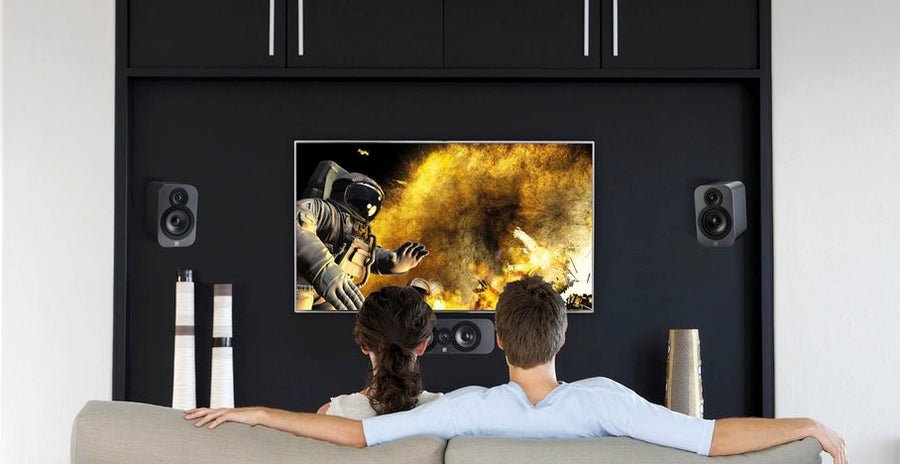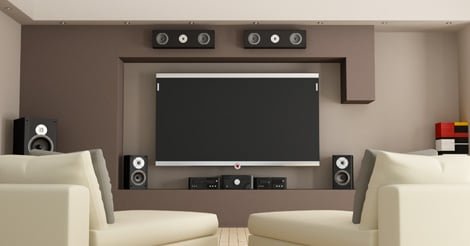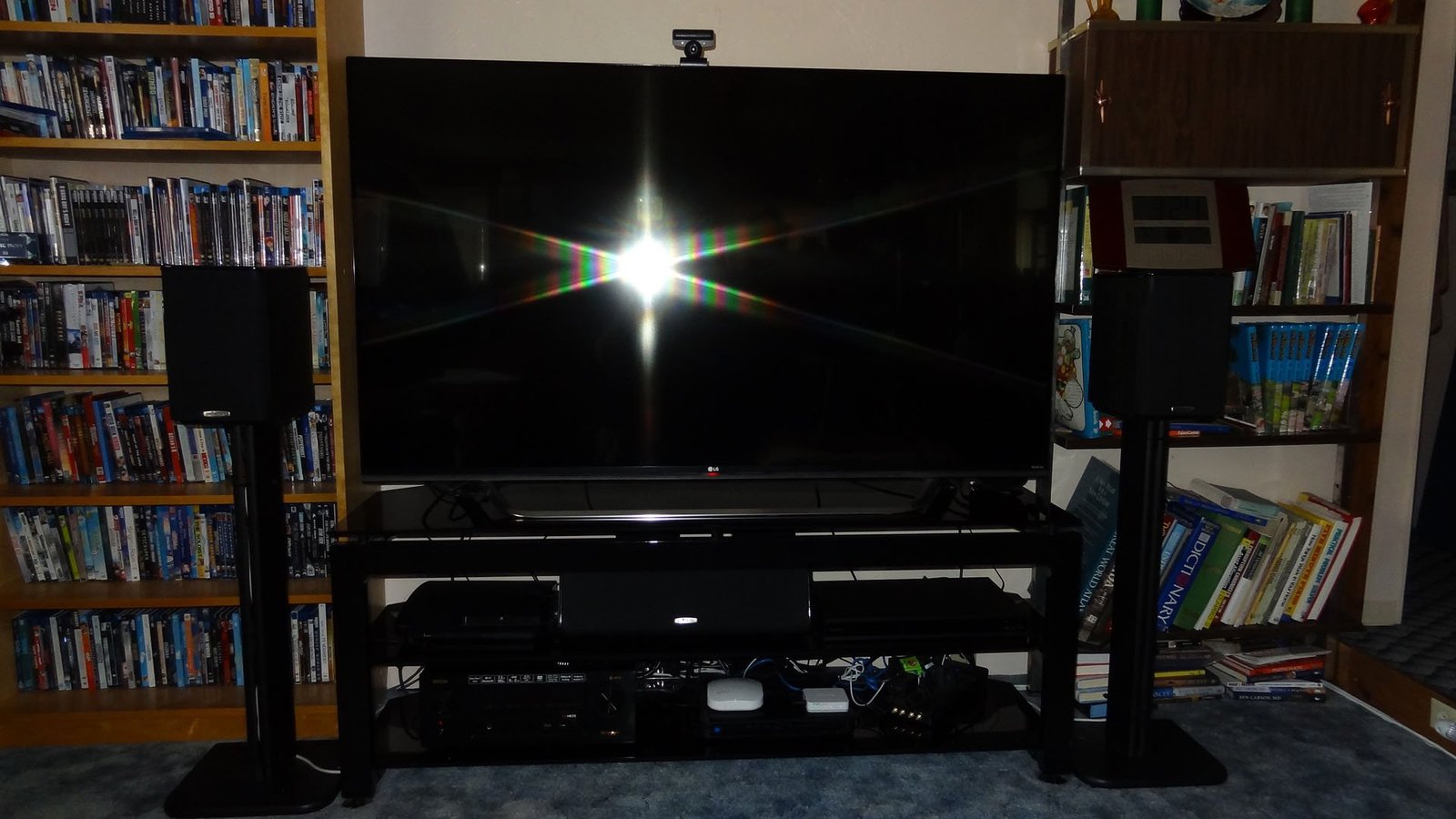Are you ready to take your home entertainment to the next level? Look no further than our beginner’s guide to home entertainment systems. Whether you’re a tech novice or just looking for some tips and tricks to upgrade your current setup, this article has got you covered. From choosing the right TV to setting up surround sound speakers, we’ll walk you through the basics and help you transform your living room into a cinema-worthy experience. Get ready to sit back, relax, and enjoy the ultimate home entertainment.

This image is property of www.customcinema.net.
TV
What to consider when buying a TV
When it comes to buying a TV for your home entertainment system, there are a few things you should consider. First, think about the size of the TV that would fit best in the room you plan to set it up in. You want to make sure it is large enough to enjoy your favorite movies and TV shows, but not so large that it overwhelms the space.
Next, consider the picture quality. Look for TVs with high resolution, such as 4K or even 8K, for a crisp and clear image. Additionally, pay attention to the refresh rate, which determines how smooth the motion on the screen appears. A higher refresh rate will result in a smoother viewing experience, especially for action-packed scenes or sports.
Don’t forget to check the available ports and connectivity options on the TV. Ensure that it has enough HDMI ports to connect all your devices, such as gaming consoles, streaming devices, or Blu-ray players. If you plan to mount your TV on the wall, make sure it is compatible with VESA standards, so you can easily find a compatible wall mount.
Different types of TVs
There are several different types of TVs available in the market, each with its own benefits and features. The most common types you will come across are LED, OLED, and QLED.
LED TVs, or Light Emitting Diode TVs, are the most popular and affordable option. They use an array of LED backlights to illuminate the screen, resulting in bright and vibrant colors. OLED TVs, on the other hand, use organic compounds that emit light when an electric current is applied. This allows for deep blacks and infinite contrast, creating a more immersive viewing experience. QLED TVs use quantum dots to enhance color accuracy and brightness while maintaining energy efficiency.
When choosing between these types, consider factors such as budget, picture quality, and personal preference. OLED TVs often come with a higher price tag but offer superior contrast and color accuracy. LED and QLED TVs are more budget-friendly options that still deliver excellent picture quality.
Smart TVs vs. regular TVs
Smart TVs have become increasingly popular in recent years, thanks to their built-in internet connectivity and the ability to stream content directly from online platforms such as Netflix, Hulu, and Amazon Prime Video. Regular TVs, also known as non-smart or conventional TVs, do not have this functionality and require an external device to access smart features.
One advantage of smart TVs is the convenience they offer. With a smart TV, you can access a wide range of online content without the need for any additional devices. Many smart TVs also come with voice control features, allowing you to search for shows or control settings using voice commands.
However, regular TVs have their own advantages. They tend to be more affordable, as the absence of smart features reduces the overall cost. Additionally, regular TVs often have a wider variety of ports, allowing you to connect multiple devices easily. If you already have a streaming device or prefer a specific brand of streaming platform, a regular TV may be a better option for you.
Ultimately, the choice between a smart TV and a regular TV depends on your specific needs and preferences. If you value convenience and want all-in-one functionality, a smart TV is a great choice. If you prefer flexibility and already have external devices for streaming, a regular TV can be a cost-effective solution.

This image is property of www.hometheaterforum.com.
Audio Systems
Choosing the right audio system
A good audio system is just as important as a high-quality TV for a truly immersive home entertainment experience. When choosing an audio system, there are a few factors to consider.
First, determine whether you want a soundbar or a home theater system. Soundbars are compact, all-in-one speaker units that can be placed in front of or mounted below your TV. They are a great option for smaller spaces or those looking for simplicity and minimal setup. Home theater systems, on the other hand, consist of multiple speakers and a separate receiver or amplifier. They offer a more robust and immersive sound experience but require more space and setup.
Next, consider whether you want wireless or wired speakers. Wireless speakers allow for greater flexibility in speaker placement, as they can be positioned anywhere within the wireless range. This eliminates the need for running long speaker cables across the room. Wired speakers, on the other hand, generally offer better sound quality and reliability, as they do not rely on wireless signals.
Finally, think about the power and connectivity options of the audio system. Ensure that it has enough power to fill your room with clear and immersive sound. Look for systems with multiple input options, such as HDMI, optical, or RCA, so you can easily connect various devices.
Soundbars vs. home theater systems
Soundbars and home theater systems both have their advantages and disadvantages, so it’s important to consider your specific needs and preferences when making a decision.
Soundbars are often the go-to choice for those looking for simplicity and convenience. They come in various sizes and price ranges, offering a compact and easy-to-install solution. Soundbars typically have multiple built-in speakers, including left, center, and right channels, as well as a subwoofer for low-frequency effects. Some high-end soundbars even have additional surround speakers for a more immersive sound experience.
On the other hand, home theater systems provide a more immersive and powerful audio experience. They consist of multiple speakers, including front, center, surround, and subwoofer channels, which work together to create a three-dimensional soundstage. Home theater systems are especially ideal for larger rooms or those who want to replicate the cinematic experience at home.
While soundbars offer simplicity and a sleek design, home theater systems provide unmatched sound quality and flexibility. However, keep in mind that home theater systems require more space for speaker placement and often involve more complicated setup.
Wireless vs. wired speakers
When it comes to choosing between wireless and wired speakers, it’s a matter of convenience and sound quality.
Wireless speakers offer the advantage of easy installation and flexibility in placement. You can position them anywhere within the wireless range and eliminate the need for running speaker cables across the room. This is particularly beneficial if you have limited space or want to avoid a cluttered setup. Wireless speakers use technologies such as Bluetooth or Wi-Fi to connect to the audio source, allowing for convenient streaming from your smartphone, tablet, or other devices.
However, wireless speakers may have limitations such as signal interference, connectivity issues, or audio compression that can affect sound quality. They also require power sources, which means you still need to consider power outlets and cables for each speaker.
On the other hand, wired speakers generally offer better sound quality and reliability. Since they are directly connected to the audio source, there is no need to worry about signal interference or compression. Wired speakers can deliver a more accurate and natural sound reproduction, especially for audiophiles or those who value high-fidelity audio.
Wired speakers do require running speaker cables, which can be a bit more involved during setup. However, advancements in cable management solutions have made it easier to hide or manage cables effectively. If you prioritize sound quality and have the flexibility to run cables, wired speakers may be the better option for you.

This image is property of cdn.shopify.com.
Streaming Devices
What are streaming devices
Streaming devices are small multimedia devices that allow you to stream audio and video content from online sources directly to your TV. These devices connect to your TV via HDMI or another video/audio input and access content from various streaming platforms such as Netflix, Hulu, or Amazon Prime Video.
One of the main advantages of streaming devices is the vast selection of content they provide. Rather than relying on traditional cable or satellite TV subscriptions, which limit your options, streaming devices give you access to a wide range of streaming services and online content. This allows you to customize your entertainment experience and watch what you want, when you want it.
Streaming devices also often come with additional features such as voice control, gaming capabilities, and app stores, which allow you to expand your entertainment options. Some streaming devices even offer 4K or HDR streaming, ensuring you can enjoy high-quality content if your TV supports it.
Popular streaming devices in the market
There are several popular streaming devices available in the market, each with its own features and user interface. Here are a few of the most popular options:
-
Amazon Fire TV Stick: The Fire TV Stick is a budget-friendly option that offers a wide range of streaming content and comes with Alexa voice control. It supports various streaming services and has an intuitive user interface.
-
Roku Streaming Stick: The Roku Streaming Stick provides a straightforward and user-friendly streaming experience. It offers a large selection of streaming channels, including free options, and supports 4K streaming for compatible TVs.
-
Google Chromecast: The Chromecast is a small and affordable device that allows you to stream content from your phone, tablet, or computer directly to your TV. It supports popular streaming apps and can be controlled via your mobile devices.
-
Apple TV: Apple TV is a premium streaming device that offers a seamless integration with other Apple devices and services. It provides access to a wide range of apps and supports 4K HDR streaming for compatible TVs.
-
NVIDIA Shield TV: The NVIDIA Shield TV is a high-performance streaming device that offers robust gaming capabilities along with streaming functionality. It supports 4K HDR streaming and has an extensive app selection.
Features to look for in a streaming device
When choosing a streaming device, there are a few key features to consider:
-
Streaming capabilities: Ensure that the device supports the streaming services you use or plan to subscribe to. Check if it offers 4K or HDR streaming if you have a compatible TV.
-
User interface: Look for devices with intuitive and user-friendly interfaces that make navigation and content discovery easy.
-
Voice control: Some streaming devices come with voice control features, allowing you to search for shows, control settings, or even control your smart home devices using voice commands. If this is important to you, make sure the device offers this functionality.
-
App selection: Consider the selection of apps and channels available on the device. Look for devices that offer a wide range of streaming options, as well as any specific apps or services you prefer.
-
Compatibility: Ensure that the streaming device is compatible with your TV and other devices, such as smartphones or tablets. Check the connectivity options and requirements before making a purchase.
-
Additional features: Some streaming devices offer additional features such as gaming capabilities, access to app stores, or the ability to cast content from your mobile devices. Consider these features if they align with your interests and preferences.

This image is property of ititech.biz.

